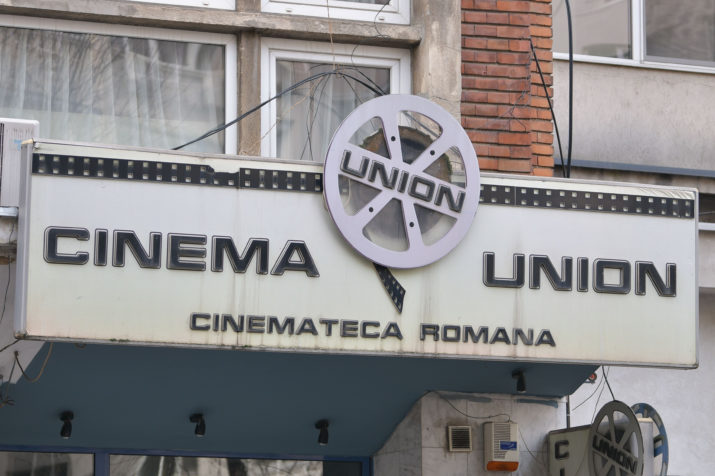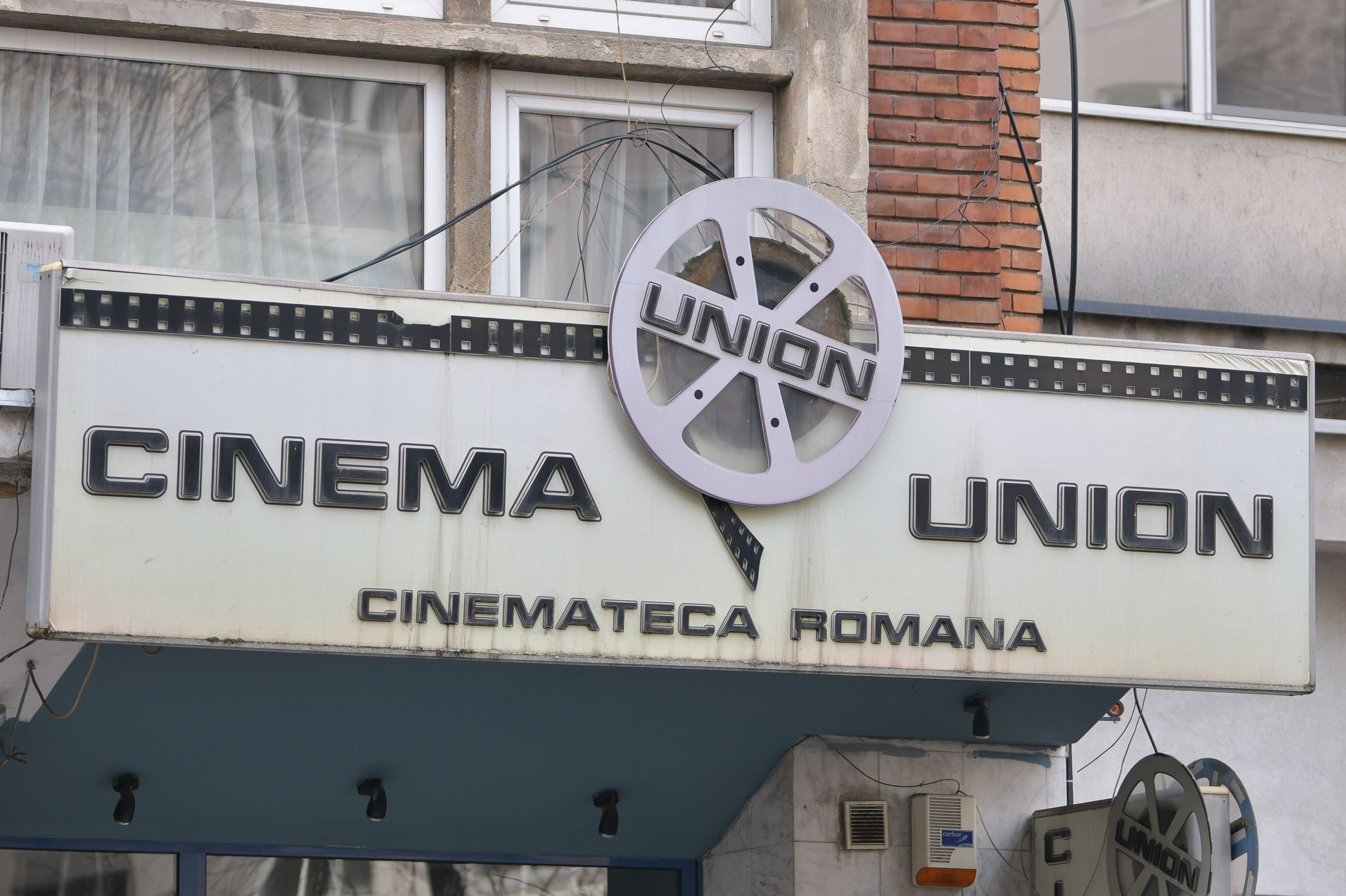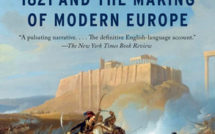

What has been retrospectively called the New Romanian Cinema (NRC) has often employed the camera as a seemingly transparent frame for ambient reality and a clear window into the world. However, the past decade, which has been more reflexive, has marked the advent of what might be called the “Newer” Romanian Cinema, or perhaps the New Romanian “Postcinema.” The relationship between cinema and reality, once considered privileged among the arts because of the film camera’s ability to objectively record what is in front of it, has been viewed with increasing skepticism since the end of the local neo-neorealism of the early 2000s. Unembellished observation of the everyday has become less and less the norm in the past decade, which has perhaps been hard to notice, because at festivals there has been a predisposition toward awarding the films that fit an established pattern. For instance, Cristian Mungiu’s Graduation, a male-centered family drama about how corruption begets corruption, won the Best Director award at Cannes in 2016; additionally, Alina Grigore’s Blue Moon, an immersive drama about binding family ties, won the Golden Shell in 2021 in San Sebastian. The more a film has employed the fly-on-the-wall filming technique, the likelier it has been to receive an award. It may have taken the 2021 Golden Bear—the third Romanian win for this Berlinale top award in a decade—for Radu Jude’s Bad Luck Banging or Loony Porn to emphatically announce that realism in Romania was out of fashion. Any perception of the contemporary world has been mediated and significantly altered to fit in the space between the prosaic reality this perception purportedly aims at documenting and the technologically processed representation of the world on a cinema screen.
A national cinema at home at foreign festivals
Success at film festivals has been crucial to animate the internal film market in Romania, where interest in Romanian films remains rather elitist, which is not surprising in a country with an unstable film industry and few cinemas outside multiplexes. For example, Jude’s Bad Luck Banging (only the third most popular Romanian film in 2021)[1] obtained just under 15,000 admissions at the box office, a figure that situates the film behind Thomas Vinterberg’s Another Round and ahead of Edgar Wright’s Last Night in Soho. By contrast, top-grossing films in Romania have always been US-made blockbusters: in 2021, Spiderman: No Way Home gathered 550,000 admissions, while the latest Batman attracted 263,500 moviegoers (having earned nevertheless only one fourth of the Romanian gross revenue of Avatar: The Way of Water). International recognition, however, has grown steadily after the initially surprising attribution of the “Un Certain Regard” prize to The Death of Mr. Lăzărescu (2005) and the Palme d’Or for 4 Months, 3 Weeks and 2 Days (2007) in Cannes. In the fifteen years that followed these prizes, Romanian films gathered numerous additional awards in Cannes and Berlin, as well as occasional awards such as the “Heart of Sarajevo,” a prize granted at a smaller festival, and more recently, several Academy Awards nominations for Alexander Nanau’s direct cinema-style documentary Collective (2019).
Clearly, Romanian cinema has recently entered a transnational or global phase and thus cannot be free of discernible codes of representation, which include the necessity to make the story intelligible to a spectator little acquainted with Romanian lived realities. As Romanian cinema has been primarily consumed by foreign audiences, the way in which Romanian films represents today’s reality and the past aims at immediacy and authenticity; nevertheless, there have been various intercultural stepping-stones at the heart of these films (reflections on family ties, relationships between individuals and institutions, erotic or morbid obsessions, etc.). These stepping-stones have served to guide a presumed Western viewer through life-as-Romanians-know-it.
The fly on the wall observing the unfolding of these films is typically a foreign festival jury member. Furthermore, in interviews, Romanian filmmakers have often mentioned the heavily ideological, meaning-heavy, pre-1989 Socialist cinema as a cinema to willfully oppose; thus, these filmmakers pose artistic opacity in contrast to a social conformity that has been enforced by the culture of the industry. After 1990, once the monolithic force of Socialist control that opposed artistic freedom had vanished, the only logical next step for festival directors to be successful was for them to challenge the conventions of the art house festival film and question the colonial meaning-making process of international festivals based on Western values. In this process, a competent filmmaker is one who makes claims to holistically describe Eastern European society from within—a massive task to get accomplished in the agreeable time span of a feature film.
Jude’s Bad Luck Banging offers a more sober (though less somber) description of Romanian society than any of the quainter slice-of-life films and constitutes a relevant representation of contemporary everyday life. The first part of Loony Porn presents life in Bucharest in quasi-documentary fashion and shows that people can say anything to anyone and park anywhere. Prudishness in public social interactions cohabitates with large-scale blatantly sexual advertisements in crowded streets. Thirty minutes into the film, a fast-paced segment features a “dictionary of anecdotes, signs and wonders” that plays like a scroll through an online video feed addressing various topics that the user might find useful. Most of these videos are satirical takes—whatever social piety might be conveyed by these terms (the army, the Orthodox Church, the deplorably large House of Parliament, coolheaded views on love, etc.) is ridiculed. Further, while the voice-over commentary is surprisingly cheeky, the visual track only slowly reveals its relevance to the accompanied “dictionary entry.” Other images provide oblique commentaries on social values: national cultural heroes, the education of adolescents, or sexuality. Both styles—the documentary-like fiction and the fast-forward audiovisual ruminations—aim to reveal something about life in a post-Socialist country, only their respective textures are radically separate.
The main textural difference lies in the rhythm of life—there is a story that unfolds, but there is also, in terms of film style, much happening beside the story. For instance, the camera follows “porno prof” Emi, the history teacher whose career crisis provides the narrative subject matter; indeed she is about to be made redundant after a leaked home video is accessed by her students on a porn site; however, gaining the empathy of viewers about her conundrum is only one aim of the film. The apparently personified camera is also easily distracted when it itself notices something unusual along the protagonist’s walk, thus reminding us that we are watching a film and that Emi is only sometimes at its center. Unlike films that pick a register and stick to it, Loony Porn is wider in scope—Jude and the editor Cătălin Cristuțiu seem to want to talk about everything at once and wave their hands accordingly to better express themselves through intertitles, changes of pace, editorials and gimmickry that are usually one step ahead of the spectator in asserting what this film is about.
Does this over-explanatory stance mean that Bad Luck Banging is expressly designed to be viewed abroad? It might seem so, but at least one prominent young Romanian critic, Dora Leu, thought that the film requires further cultural translation for non-Romanians. Among other cultural specificities present there are a comedy TV star only known to Romanian spectators, who delivers a leftist speech using a Bucharest accent, and Romanian peculiarities about anti-masking protests and the country’s staunchly ignored history of anti-Semitism. For that matter, Jude seems more committed in his films to particular aspects of discourse within Romania and the nuances often circumstantial emergence of this discourse. He does not give in to the clear-cut distinction, often present in films presented at festivals, between the poverty-stricken, corrupt Eastern Europe and the empowering, wealthy, and meritocratic West. By contrast, these East vs. West thematic overtones are a lot more heavy-handedly present in Cristian Mungiu’s or Radu Muntean’s films, which possibly partly explains their broader comprehensibility.
Realism vs. reflexivity
Self-reflexivity has been evident in Romanian art films; there are, however, some exceptions less than a decade after Stuff and Dough (r. Cristi Puiu, 2001) launched the New Romanian Cinema, which has had a realist bent. By 2013, Corneliu Porumboiu’s When Evening Falls on Bucharest or Metabolism had satirized the extreme long takes that pretend to capture unmediated reality (Metabolism is a 90-minute film interrupted by merely 16 editing cuts). These movies also ridiculed the self-seriousness of the director about his art, as the director-protagonist appears in the undignified pose of trying to seduce an actress, which leads to the script being changed so as to include a nude scene written specifically for her. Moreover, the highly debatable premise that a technological recording device—the camera, for example—produces an inalterable truth is shown to be fallacious within the same narrative: the protagonist alters his endoscopy to feign illness after taking a day off the set to spend it with the actress.
Other more discreet traces of self-reflexivity in New Romanian Cinema involve the casting of choices, for, although Romanian films often echo the aesthetic choices of postwar Italian cinema, its brand of neorealism does not automatically correlate with nonprofessional actors, as the NRC has also created a kind of star system. For instance, director Ana Lungu, in Self-Portrait of a Dutiful Daughter, casts her parents to play the family of the protagonist (a middle-class, highly educated woman living in Bucharest and roughly the same age as herself); and director Ivana Mladenovic plays the eponymous protagonist in Ivana the Terrible (2019), further suggesting a strong overlap between creator and character. This casting strategy follows that of the writer Adrian Schiop in a previous film, who played the central character in Soldiers: Story from Ferentari (2017); Soldiers adapts a first-person novel in which Schiop-the-actor embodies Schiop as the author’s narrator, once again hinting at the porous lines between autobiography and fiction.
Adaptations intrinsically frame the narrative material into something to be molded according to the author’s intent, extracted from literature, and refashioned into film, even when echoing slice-of-life tropes. Soldiers casts an unmythologizing gaze on an interracial gay couple; in the film, a lower-middle-class, white, gay man inadvertently complicates the life of his closeted Roma lover, whom he meets while researching ethnic music—known in Romania as manele—and looking for a guide in a neighborhood of ill repute. Bringing the literary author’s body on screen to interact with other actors is to further accentuate the narrator’s self-exposure in cinematic terms. When the adapted novel is not contemporary—even when set against a photorealistic backdrop—the storytelling is further evocative of a contemporary reading of the past. This reading clearly exists in the case of Radu Jude’s Scarred Hearts (2016), an adaptation of Max Blecher’s eponymous novel set in a tuberculosis sanatorium in the 1930s. The film simultaneously respects the literary source—to the point of being, by conventional standards, uncinematic, i.e., the film mostly consists of people speaking in long phrases while lying on their backs—and marks it as belonging to a distant and incomprehensible era. The film reenacts obsolete medical practices and anti-Semitic political turmoil, as well as the consequences that would only become evident a decade later. Blecher, a Jewish man in an age hostile to diversity, chose not to mention his heritage in his writings, but his film makes that heritage far more evident.
A slice of life in a cake of culture
While adapting a novel is a more tried-and-true way for a film to plug itself into a certain cultural conversation, it is hardly the only way to embed the protagonists into a nexus of ideological stances and social affordances made explicit by cultural consumption. Rather than from a novel, Eugen Jebeleanu’s Poppy Field (2020) departs from a recent anti-LGBT demonstration: the boycott of a (fairly innocuous) queer film by fundamental Orthodox protesters who entered the cinema to interrupt the screening. The tale is set mostly inside the cinema and told through the vantage point of a covertly gay policeman who commits a faux pas while authoritatively trying to restore order (and hide a personal connection with the queer community). The suggestive context of a queer film interrupted by conservatives who simply cannot stand such deviation serves to cue spectators about how to interpret the policemen’s homophobia, which is far from monstrous when judged against its cultural milieu. The context sets the scene for more nuanced psychological observations deriving from the conservative convictions by which men attracted to men are unmanly while testosterone is the measure of a good policeman.
Moving toward a more private type of audiovisual consumption, Mia Misses Her Revenge (2020) revolves around a beautiful post-adolescent who plans to make a porn film to send to her ex-boyfriend, as the plan goes, to make him jealous when seeing her with another man. Recently out of a long-term relationship and clearly privileged and sheltered from the prevailing culture of misogyny against overtly sexual women, Mia only realizes while propositioning various young men that pitching herself as a prospective porn actress is not the safest way to approach the opposite sex. By framing desire and female beauty alongside the taboo of pornography (and to a lesser extent, the independent theater scene in which Mia makes her entrance), the film quickly collects and displays a series of hardened ideas about propriety, sexuality, and personal autonomy with respect to relationships and the film/stage image. What might otherwise have been a common story of post-adolescent love gone sour turns into an examination of Mia’s tussle with received notions of what a young woman can, should, and should not do. Cinema has often been attributed the power to directly address the unconscious, and many filmmakers have understandably explored its potential for sensuousness and wish fulfillment, NRC norms aside. “For me, the cinema is not a slice of life,” Alfred Hitchcock said, “but a slice of cake,” casually infusing his films with secret desires and forbidden pleasures. A more serene variation on sheltered living in the independent cultural sphere is Ana Lungu’s One and a Half Prince (2018), in which the three utterly charming protagonists (to say nothing of the dog) linger between love, loss, and arrested development.
Life in post-physical reality
Recent Romanian films have often departed from the observation of what goes on in the space before the camera, and this departure likely has much to do with the interrelation of technology and contemporary living. Cameras and screens are everywhere, and they interfere with our everyday lives. Andrei Huțuleac’s doxxing comedy #dogpoopgirl (incidentally, along with Jude’s recent feature, the other title of 2022 that has been difficult to mention in mainstream press) explicitly makes the point about the omnipresence of screens. A woman who uses the subway to take her newly adopted dog home finds herself publicly aggressed after her dog vomits there and she does not have a plastic bag to clean up the mess. She flees the scene as onlookers scold her, but this is just the beginning of the story: a video of the incident goes viral and exposes her identity to streaming strangers. Characters appear in the film (sometimes mediated by a television layout, complete with hilarious marquees or by a video platform interface) before the woman makes physical contact with them, just as viewers of the clip make definitive character judgments about her without ever having met her in person. This situation is a far cry from a Mungiu- or Muntean-depicted society of villainous institutions and unbreakable family ties (the protagonist here is single and childless; therefore, it takes strangers to ruin her life). While some aspects of the movie are distinctively Romanian (see the Bad Luck Banging-like aggressiveness among strangers or the unsurpassably sentimental or moralizing takes by TV show crews about various aspects of this vacuous news story), the story broadly seems to be set “Anywhere, Internet Age”; this generalizability is supported by the fact that the movie is the fictional version of a story that made the news in South Korea.
The variety of narrative subject matters and cultural framing devices in these films begs the question: what is this variety all for? What do filmmakers accomplish by abandoning the neorealist tradition of filming a finite number of (non-)actors in a photorealist spatial setting and by instead interposing screen interfaces, acclaimed novels, cultural diegetic settings, and disruptive film editing? It would be reductive to gather all instances under a wide umbrella such as postmodernism, Brechtianism, deconstruction, etc. Bad Luck Banging and #dogpoopgirl are not the same type of film. The former has disruptive ambitions that seem to be largely political, and even when depicting a more traditional scene (such as parents sitting in a school meeting), it still brings in cryptic details, such as dubious statues in the background, of which explaining the significance would necessitate a whole set of footnotes. The latter is a lighter film that ultimately absorbs all framing devices into an eventful and entertaining story (where even the surprising ending resembles a theatrical reversal more than a meta-commentary).
Perhaps the only thing these films have in common is a skepticism toward social and anthropological observation, which was treated with respect in Romanian films in the early 2000s. In an age of bulimic audiovisual consumption, what can we see with our own eyes when everything we may think about has already been thought out for us—as well as audiovisually configured—before we have had any time to look around?
Irina Trocan is lecturer at the National University of Theatre and Cinema in Bucharest, where she teaches film criticism to undergraduate and graduate students and coordinates the online film magazine Acoperișul de Sticlă (“The Glass Roof”). Her latest volume is Audiovisual opposition: Critical thinking in video essays and essay cinema (Idea Design & Print, 2020). She is a Fulbright alumna (2017-2018, as Junior Visiting Researcher at the University of Pennsylvania) and New Europe College Fellow (2020-2021).
References
Film Criticism. 2017. vol. 41, no. 2 (September).
Leu, Dora. “Eye For Film: Jude Uncovered! An almost complete A to Z to Bad Luck Banging or Loony Porn.” Accessed 15 May 2022. https://www.eyeforfilm.co.uk/feature/2021-11-26-jude-uncovered-an-almost-complete-a-to-z-to-bad-luck-banging-or-loony-porn-feature-story-by-dora-leu
Marijke De Valck. 2007. Film Festivals: From European Geopolitics to Global Cinephilia. Amsterdam: Amsterdam University Press.
Stojanova, Christina, ed. 2019. New Romanian Cinema. Edinburgh: Edinburgh University Press
Trocan, Irina (ed.). 2020. Romanian Cinema inside Out: Insights on Film Culture, Industry and Politics 1912-2019. Bucharest: Romanian Culture Institute Press.
[1] According to the Romanian box office surveyor Cinemagia.ro.
Photo: Shutterstock. Bucharest, Romania December 2022.
Published on February 7, 2023.




